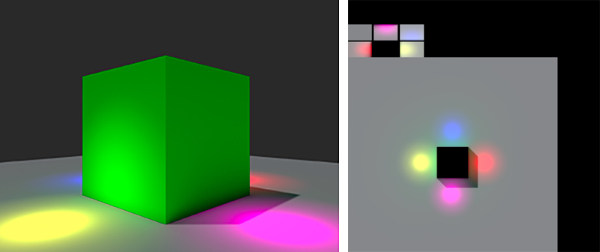Lightmapping
Lightmapping is the process of pre-calculating the brightness of surfaces in a SceneA Scene contains the environments and menus of your game. Think of each unique Scene file as a unique level. In each Scene, you place your environments, obstacles, and decorations, essentially designing and building your game in pieces. More info
See in Glossary, and storing the result in a Texture called a lightmapA pre-rendered texture that contains the effects of light sources on static objects in the scene. Lightmaps are overlaid on top of scene geometry to create the effect of lighting. Glossary, and storing the result in a Texture called a lightmapA pre-rendered texture that contains the effects of light sources on static objects in the scene. Lightmaps are overlaid on top of scene geometry to create the effect of lighting. More info
See in Glossary for later use.

Lightmaps can include both direct and indirect light. This lighting texture can be used together with surface information like color (albedo) and relief (normals) by the ShaderA program that runs on the GPU. More info
See in Glossary associated with an object’s material.
The data baked into lightmaps cannot change at runtime. Real-time lights can be overlaid and used additively on top of a lightmapped scene, but cannot interactively change the lightmaps themselves.
With this approach, we trade the ability to move our lights at gameplay for a potential increase in performance, suiting less powerful hardware such as mobile platforms.
Unity provides the following lightmappersA tool in Unity that bakes lightmaps according to the arrangement of lights and geometry in your scene. More info
See in Glossary for generating lightmaps:
For advice on setting up a lightmapper, see Lightmapping: Getting started.